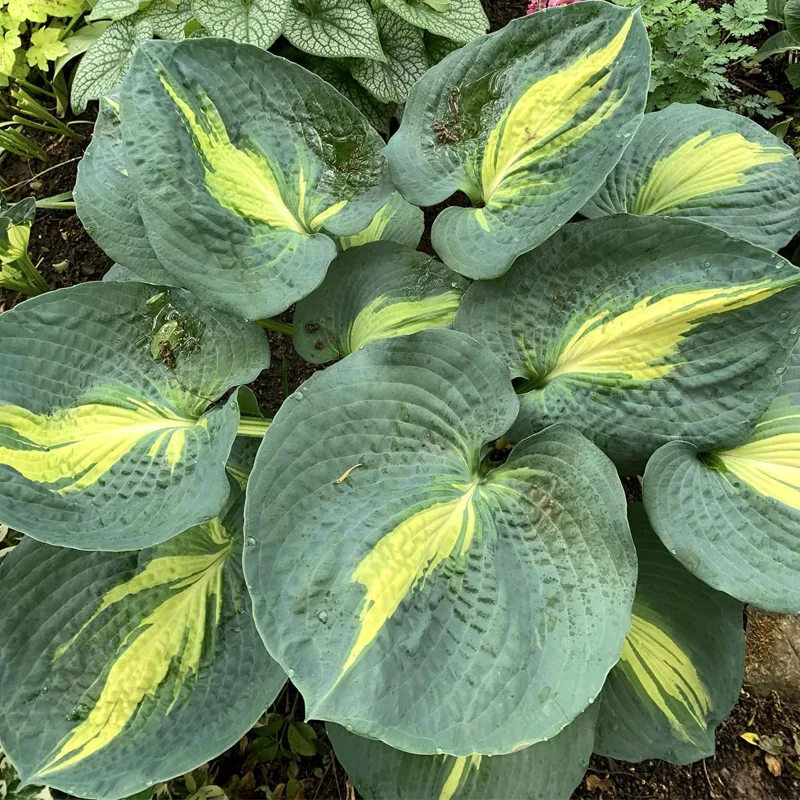All About the Blushing Bromeliad: Neoregelia Carolinae
Hi, Ferb Vu here, and today we’re diving into the fascinating world of Neoregelia carolinae, also known as the blushing bromeliad. This stunning epiphyte (air plant) native to the rainforests of southeastern Brazil has captured the hearts of plant enthusiasts worldwide.
116 Species in Genus Neoregelia
What Makes the Blushing Bromeliad Special?
Neoregelia carolinae isn’t your average houseplant. It boasts unique characteristics that set it apart:
- Blushing Beauty: This bromeliad lives up to its name. As it approaches flowering, the central rosette of leaves transforms into a vibrant red, resembling a blush. This captivating display lasts for months, making it a conversation starter in any home.
- Showy Foliage: Even without flowers, Neoregelia carolinae is a visual treat. Its narrow, leathery leaves boast a glossy sheen and sport pointed tips. The leaves form a captivating funnel-shaped rosette, adding a touch of elegance to your space.
- Air Plant Advantage: Unlike most houseplants, Neoregelia carolinae doesn’t require traditional potting. It thrives as an epiphyte, clinging to branches or mounting boards with its specialized roots. This makes it ideal for creating unique living arrangements like terrariums or mounted displays.
How to care for Neoregelia carolinae?
Bringing a Neoregelia carolinae into your home is easy. Here’s what you need to know:
- Light: These bromeliads prefer bright, indirect light. Avoid harsh midday sun, which can scorch the leaves.
- Water: Neoregelia carolinae gets its water from the central rosette, or “tank,” formed by its leaves. Fill the tank regularly with rainwater or filtered water, allowing it to drain completely to prevent rot. Mist the plant occasionally, especially in dry conditions.
- Humidity: Mimicking its rainforest habitat, Neoregelia carolinae thrives in moderate to high humidity. Grouping plants together or using a pebble tray with water can help increase humidity levels.
- Fertilizer: While not essential, a light feeding with diluted bromeliad fertilizer during the growing season can encourage vibrant foliage and flowering.
- Temperature: Maintain consistent temperatures between 65-80°F (18-27°C) for optimal growth.
Neoregelia Carolinae vs. Other Bromeliads
With so many bromeliad varieties available, it’s natural to wonder how Neoregelia carolinae compares. Here’s a quick breakdown:
- Aechmea fasciata (Pink Quill): Both boast vibrant red inflorescences, but Aechmea fasciata features showy pink flowers that emerge from the central rosette, while Neoregelia carolinae’s display lies in its blushing foliage.
- Tillandsia cyanea (Pink Quill): Another air plant with pink flower spikes, Tillandsia cyanea has a more delicate and wispy appearance compared to Neoregelia carolinae’s robust, structured form.
- Guzmania lingulata (Red Star): Similar to Neoregelia carolinae with its red central rosette, Guzmania lingulata boasts prominent red flower bracts that steal the show. However, Neoregelia carolinae’s vibrant foliage remains the star of the attraction.
Choosing the right bromeliad depends on your personal preference. If you seek a plant with captivating foliage that transforms during flowering, Neoregelia carolinae is an excellent choice.
How often does Neoregelia carolinae flower?
Flowering typically occurs every 2-3 years, but this can vary depending on growing conditions.
Is Neoregelia carolinae a good beginner plant?
Absolutely! Its air plant nature and low maintenance needs make it ideal for those new to the plant world.
What happens after Neoregelia carolinae flowers?
The parent plant will slowly decline, but fret not! Pups, or offsets, will sprout around the base. These can be separated and nurtured to become new blushing bromeliads.
Bring Home the Blushing Beauty
Neoregelia carolinae is more than just a houseplant; it’s a captivating conversation starter. With its unique blushing foliage and air plant charm, it adds a touch of the tropics to any indoor space. So, why not bring a piece of the rainforest into your home and experience the magic of the blushing bromeliad?
If i die, water my plants!



